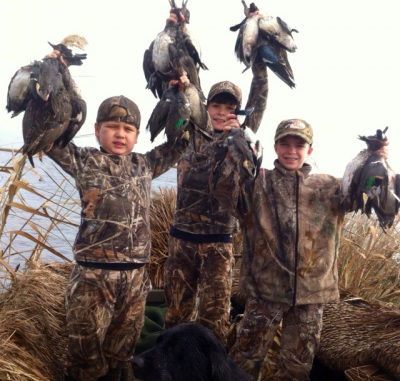
Hunters report mixed opening weekend results for second split
Despite frigid conditions in the northern U.S. and almost double the number of ducks here now compared to last month, December’s recently completed aerial waterfowl survey total is still about 25-percent below the long-term average.
Larry Reynolds, waterfowl study leader for the Louisiana Department of Wildlife and Fisheries, estimated 1.95 million ducks in the state’s coastal zone last week, about 5-percent fewer than last December’s estimate of 2.06 million birds and 25-percent below the long-term average of 2.6 million.
“Although a big increase from November, the total was unexpectedly low given the recent cold weather, including ice/snow further north in the flyway,” Reynolds said in the report.
But a large increase in mallards (1,000 to 94,000), canvasbacks (0 to 66,000), scaup (0 to 47,000) and ring-necked ducks (26,000 to 233,000) indicated a significant migration has taken place into the state since last month.
“However, all species except shovelers, ring-necked ducks and canvasbacks were below their long-term December averages,” Reynolds said. “Increases from November were seen proportionally in both southwest and southeast regions of the coastal zone with approximately double the number of ducks from last month counted in both regions.
“Consequently, the distribution of ducks remained the same with about two-thirds of the ducks counted in southwest Louisiana where concentrations were noted in the marshes between Little Pecan and Grand Lake and northeast of Pecan Island, as well as some agricultural fields south of Welsh.”
At Catahoula Lake, the estimate of 76,000 birds for December is the lowest since 2009. The count there fell by more than half from the November count of 154,000, largely because of the lack of dabbling ducks, despite good habitat noted there for dabblers.
A scaup survey on Lakes Maurepas, Pontchartrain and Borgne, however, did show a huge increase from last year’s record low, and the 52,000 scaup on Lake Borgne is a record high. Additionally, the 226,000 scaup noted on Lake Pontchartrain is 28-percent above the long-term average for that lake.
The good news is that despite the relatively low numbers of ducks, Reynolds said habitat conditions remain strong across the state.
“Good submerged aquatic vegetation growth continues to be noted in coastal habitats, and lower water levels since the November survey created more favorable conditions for foraging waterfowl in southeast Louisiana,” he said. “It seems unlikely that poor habitat conditions are a factor in the relatively low estimate of ducks from this survey.”
David Faul, with Bin There Hunting in Welsh, said reports he’d heard from southwest Louisiana indicated a slow opening weekend for the second split.
“Over in this area it was pretty slow,” Faul said. “Pretty rotten, really.”
He pointed to last week’s strong cold front as part of the problem.
“Before that we were holding lots of ducks,” Faul said. “When that cleared through and blew out, the ducks went with it evidently because they cleared out of here.”
He did see lots of high-flying big ducks this weekend that he hopes are new arrivals moving into the area.
“I think it will get better throughout the rest of the week,” he said. “Once this south wind comes back up, we’re probably going to pick back up and start getting better.”
Damon McKnight, with Super Strike Charters in Venice, said he heard most of the good action this weekend was on the Delta National Wildlife Refuge.
“The refuge is the only place that had any ducks. Everywhere else you were shooting like maybe two or three per hunt,” McKnight said. “You can hunt the refuge if you feel like using a pirogue in semi-low water, because they have ducks there. Everywhere else, not so much.”


